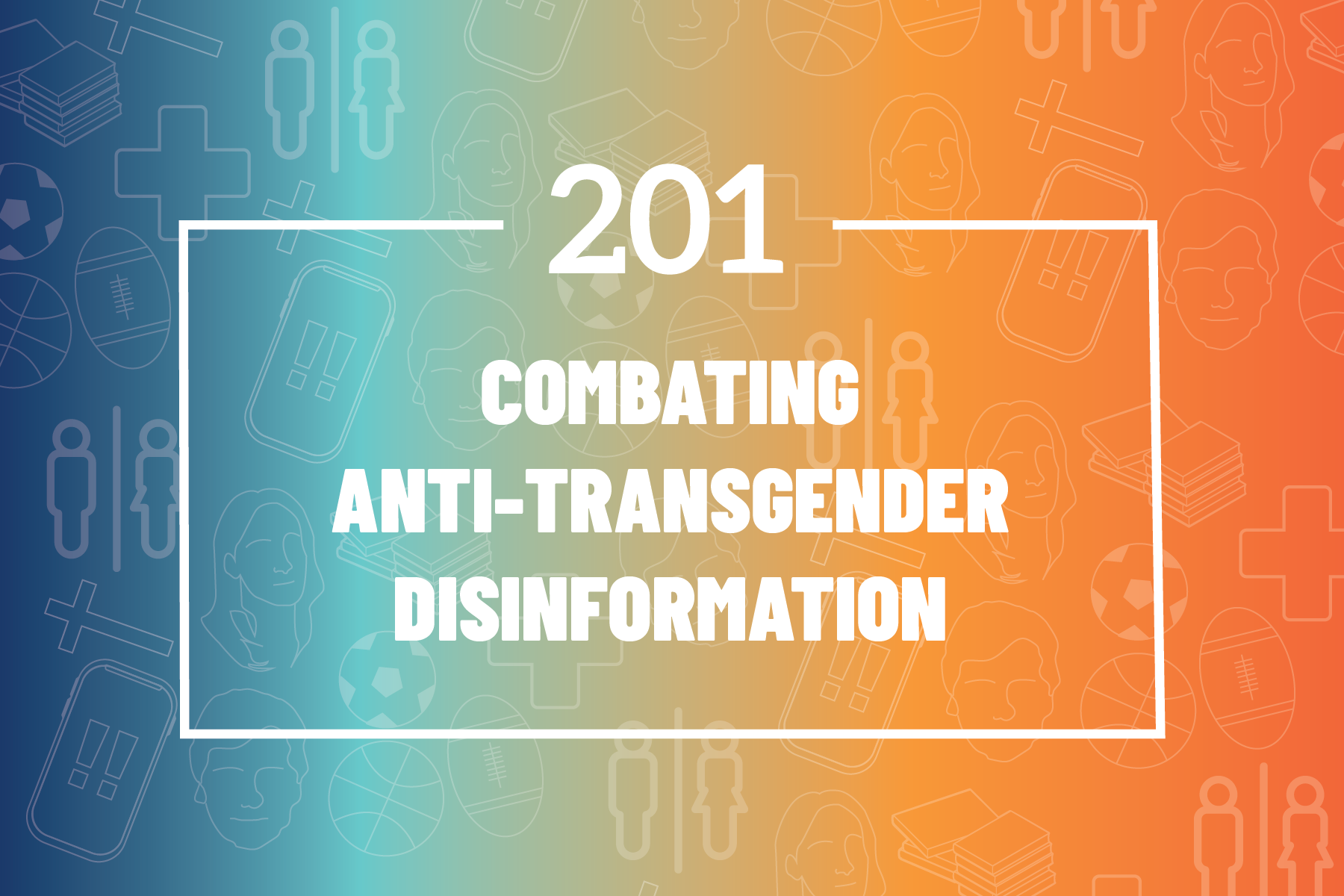Combating Anti-Transgender Disinformation

This resource is Part 2 in a series. Go here for Part 1 (101: Anti-LGBTQ Organizing).
Anti-transgender violence, rhetoric, advocacy, and legislation have been accelerating each year since 2020. Disinformation (the intentional sharing of wrong information) and misinformation (the unintentional sharing of wrong information) have proliferated. It is imperative that advocates become fluent in recognizing and combating dis- and misinformation that targets trans people.
This 201-level guide, combined with our other resources on anti-LGBTQ organizing, is the perfect place to start practicing your disruptions.
For other PRA work on LGBTQ Justice, please visit politicalresearch.org/research/lgbtq-justice/.
Strategy and Implementation
It can be difficult to think of responses to common anti-transgender disinformation in the moment. Responding directly to anti-trans talking points may also provide attention and validation to the disinformation, rather than correction. Evidence shows that “prebunking,” or inoculating people to disinformation before they hear it from a disreputable source, can be highly effective in preventing the spread of dis- and misinformation. In general, when combating anti-trans rhetoric, try to respond from a place of inclusion rather than exclusion, and a place of united justice rather than identity-based politics. We all, including trans people, deserve access to health care; we all, including trans people, deserve access to a quality, safe education.
Anti-trans rhetoric appears in many forms, and originates from many messengers. Some messengers you can’t reach at all: the leaders of Christian Right organizations, for example, or the anonymous Twitter troll. But you can have inoculating conversations with your friends, family, coworkers, extended networks, care and service providers, lawmakers, and policy leaders.
When we disrupt anti-trans talking points, we have several different approaches at our disposal: we can be factual, humorous, logical, or rhetorical. A factual argument might be that the International Olympic Committee has long had guidelines in place to permit transgender athletes to compete as their own gender. A humorous argument might include pointing out that stopping someone from using the bathroom has never stopped someone from needing to use the bathroom—trans people, like all people, still need to pee. A logical argument would point out that since all major medical associations support gender-affirmative care, and we trust those institutions with our health in other areas, we should trust them here. And a rhetorical argument might wonder why lawmakers are spending resources on attacking bodily autonomy, while social safety nets desperately need funding.
Don’t forget we can also always choose to ignore anti-trans rhetoric if the arguments are made in bad faith or are particularly offensive. Focus instead on individual stories, personal accounts and connections, and a shared vision for a liberatory future.
|
Disinformation |
Disruption |
|
Detransition / Desistance / Regret |
|
|
Contagion and ROGD (so-called “rapid-onset gender dysphoria”) |
|
|
Puberty Blockers and Hormones |
|
|
Recruitment / Grooming |
|
